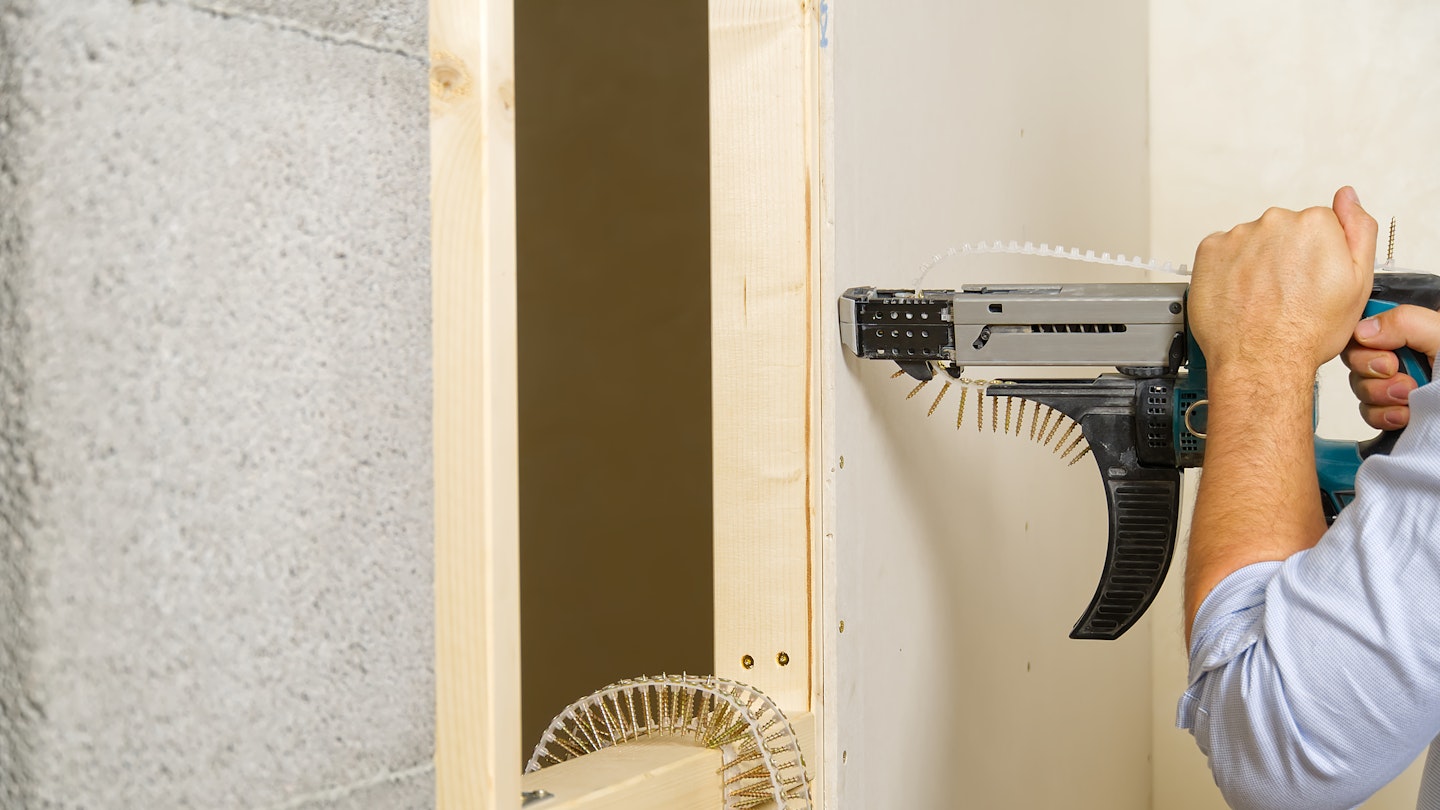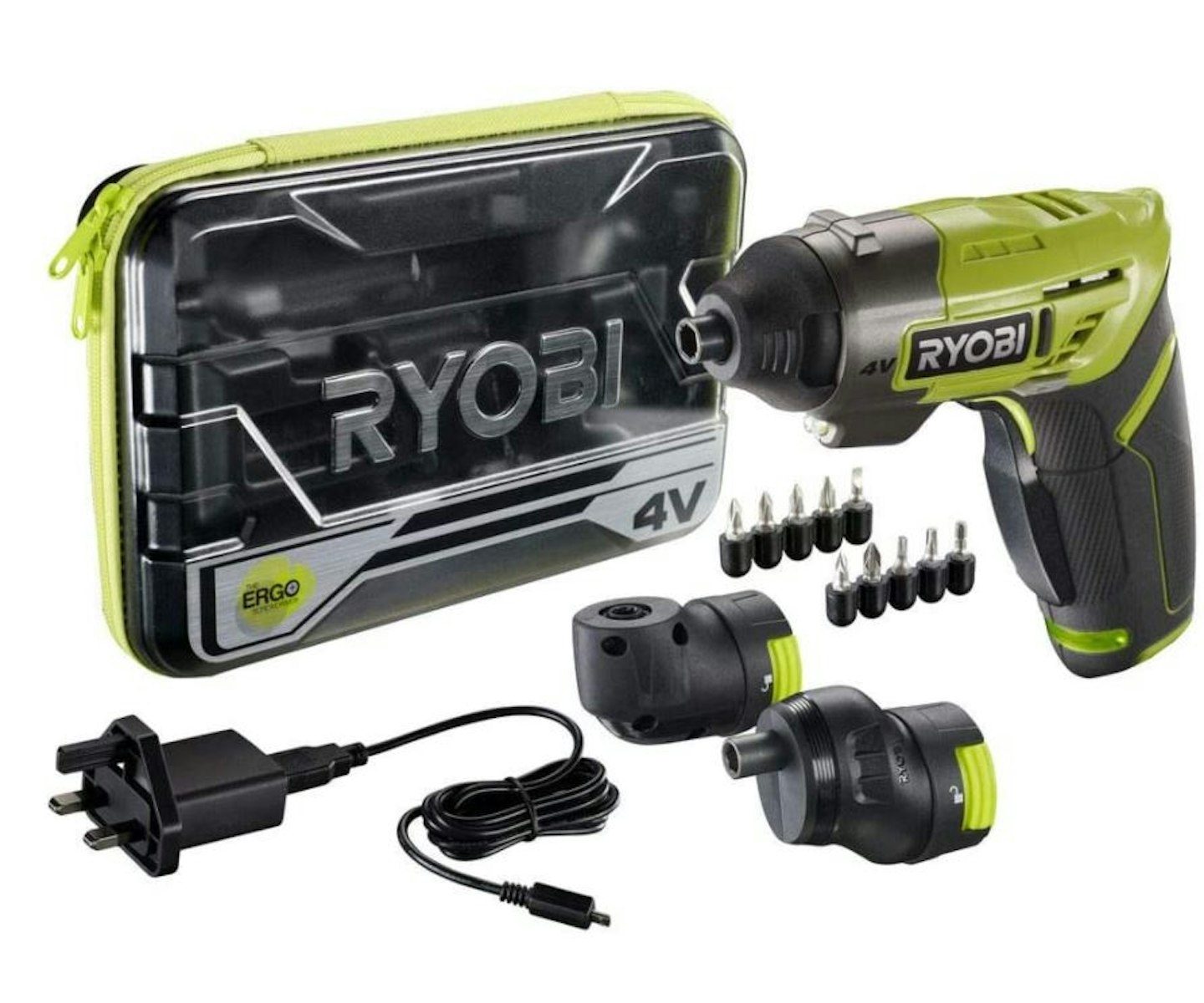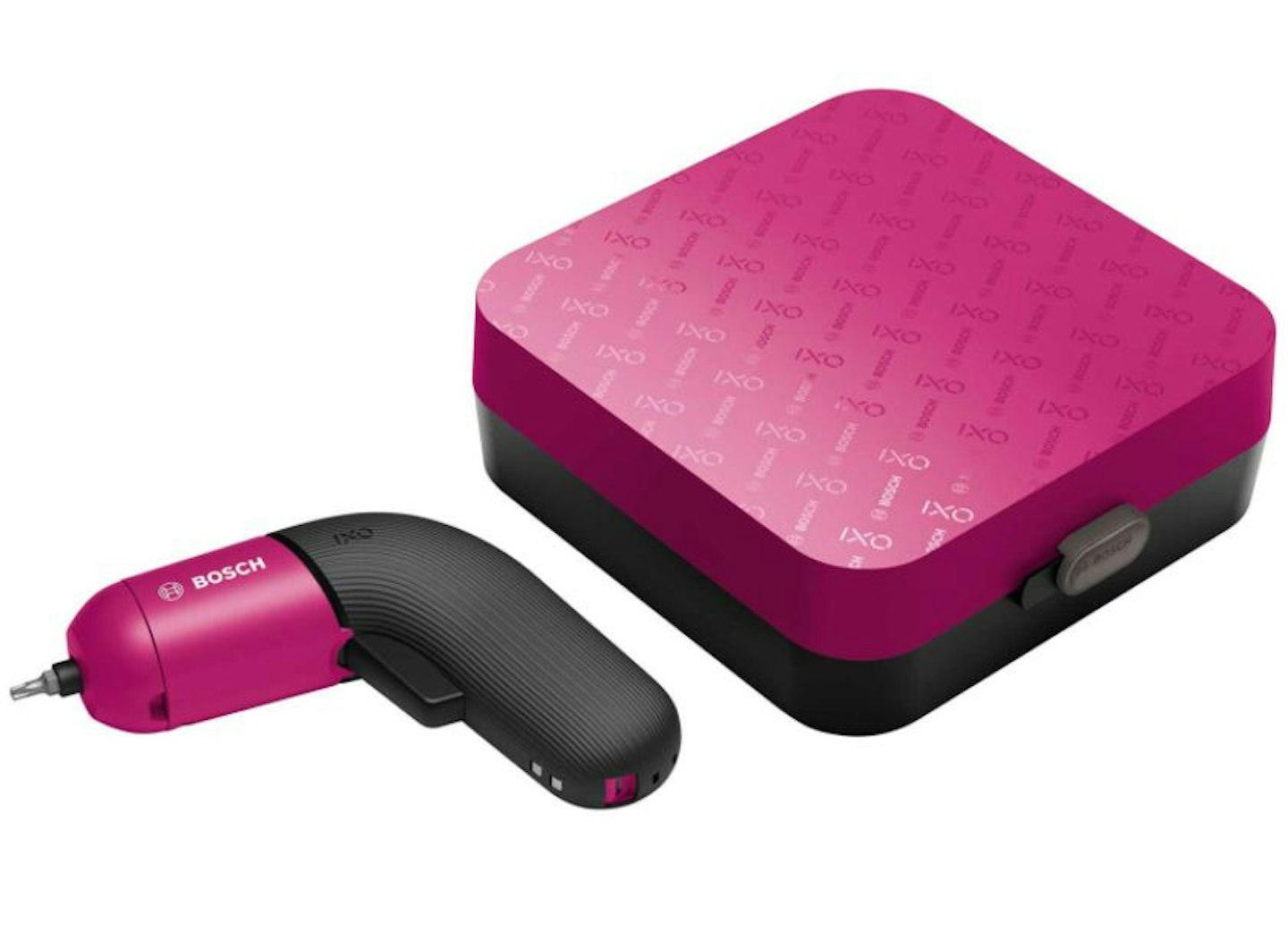A dedicated tool specifically for driving screws, electric screwdrivers are a specialised relative of the cordless drill. Though the two aren’t mutually exclusive, there are marked differences which we will cover here. Get ready to learn about the different types of electric screwdrivers, what they are used for, and the best of each type on offer.
Electric screwdriver vs cordless drill: what’s the difference?
Put simply, a drill is a more versatile tool, but an electric screwdriver is more adept at precisely and quickly driving many screws.
At the fundamental level, an electric screwdriver works at a slower speed than a drill. Electric screwdrivers have much smaller motors and are therefore less powerful. The smallest electric screwdrivers often only demand about 4V to work, whereas the smallest electric drills start at around 10 or 12V. Because of this slower operating speed and smaller motor size, electric screwdrivers can be much more compact and let you be very precise about the positioning of screws when you drive them in.
While drills are more powerful and versatile, an electric screwdriver becomes handy in scenarios such as assembling flat-pack furniture, tightening door hinges, or fastening plasterboard to timber framing. When you need to insert a lot of screws but in a precise manner.
Read about the best cordless drills under £100.
Summary of electric screwdrivers
While there are some commonalities between electric screwdrivers and drills, more specialised screwdrivers branch away and become quite a different beast, as you shall see. Before we go in-depth for each, below is a brief bit-size outline.
Small cordless screwdrivers
These are the little fellas you’d keep somewhere handy, such as in the kitchen DIY drawer next to the tape measure. They demand only a small voltage and don’t produce much torque, but are very small and light. They're perfect for around the house jobs, from assembling IKEA furniture to building gaming PCs. They have a quick-change hex chuck for ¼-inch bits. Even good ones aren’t overly pricey and they often come with a range of bits.
Read our full article on small cordless screwdrivers.
Autofeed screwdrivers
Screwdrivers of this type look quite different. With the appearance of a futuristic sub-machine gun, autofeed screwdrivers take collated screws arranged in a strip-like ammunition belt. This means you can adjust their depth setting and insert lots of screws one after the other quickly into decking or drywall, for example.
Drywall screwdrivers
Also called screwguns, these look similar to cordless drills except for the nose. Rather than a chuck, they have a cone. The nose cone still has a bit holder but it allows screws to be countersunk into a material to exactly the right depth and drives in screws quickly but delicately without damaging the fasteners.
Related: The best impact drivers
The best small cordless screwdrivers
Amazon Exclusive
This Ryobi kit is great for reaching awkwardly placed screws with the right angle and has offset head attachments included. The former is self-explanatory, but the latter lets you drive screws against perpendicular surfaces. Itu2019s one of the more powerful screwdrivers of this type, offering 5Nm of torque. Plug in the micro USB cable and charge it from a regular home plug (fully charged in three hours). It comes with 10 screwdriver bits.
For relative versatility, the Bosch IXO screwdrivers have it nailed. As an electric screwdriver, it works in exactly the same way as the Ryobi unit and can be fitted with a right angle and offset head attachments, too. But thereu2019s more. The IXO tools also have adaptors that turn it into a mini drill, a corkscrew, and a spice mill to name but three. Also available in green.
About small screwdrivers and how to use
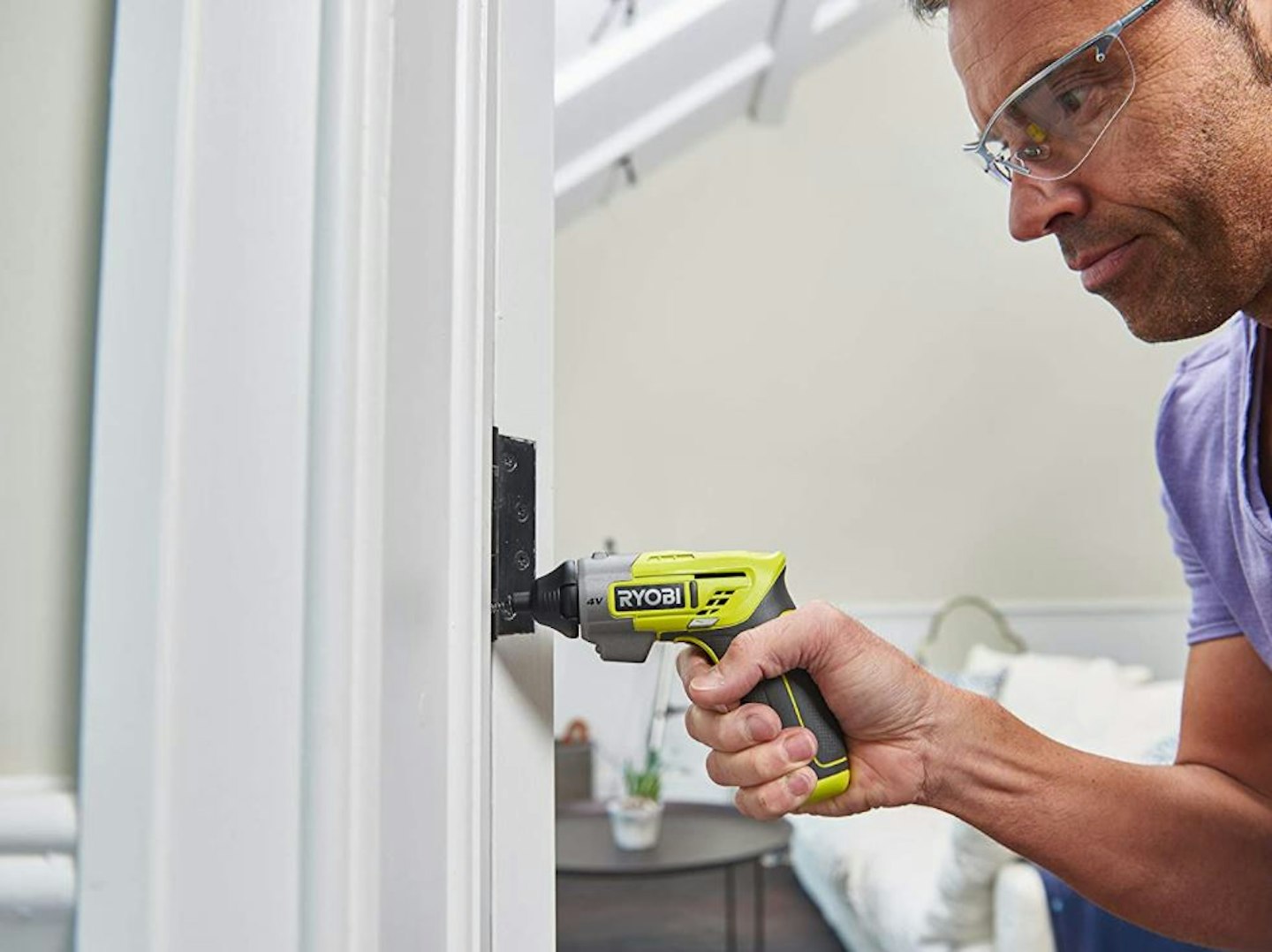
These little screwdrivers use ¼-inch hex bits. Simply insert the right one into the bit holder and away you go. Squeeze the trigger more for increased speed; flick the switch on the handle to choose between forward and reverse.
Related: The best tools for DIY
The best autofeed screwdrivers
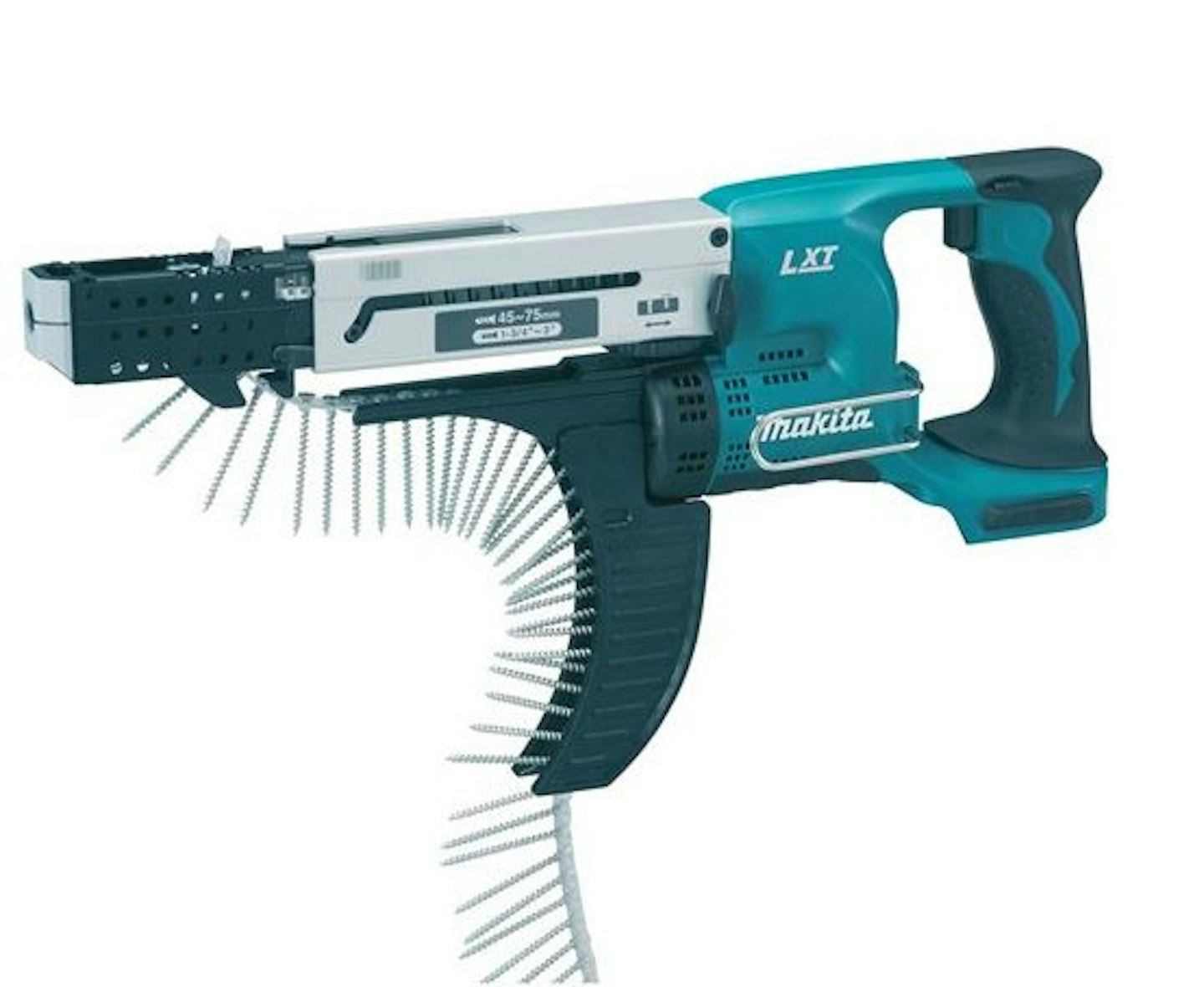
www.tooled-up.com
Makita owns this corner of the tool world with its autofeed screwdrivers. They are light, reliable, and durable. This model is a cordless 18V unit that runs on Makitau2019s Li-ion batteries. Its screw size range is 45 to 75mm which makes it ideal for fixing screws to drywall, but it can also take longer screws often needed for decking. It includes practical features such as the anti-tilt stopper base which keeps screws from swaying when being driven in.
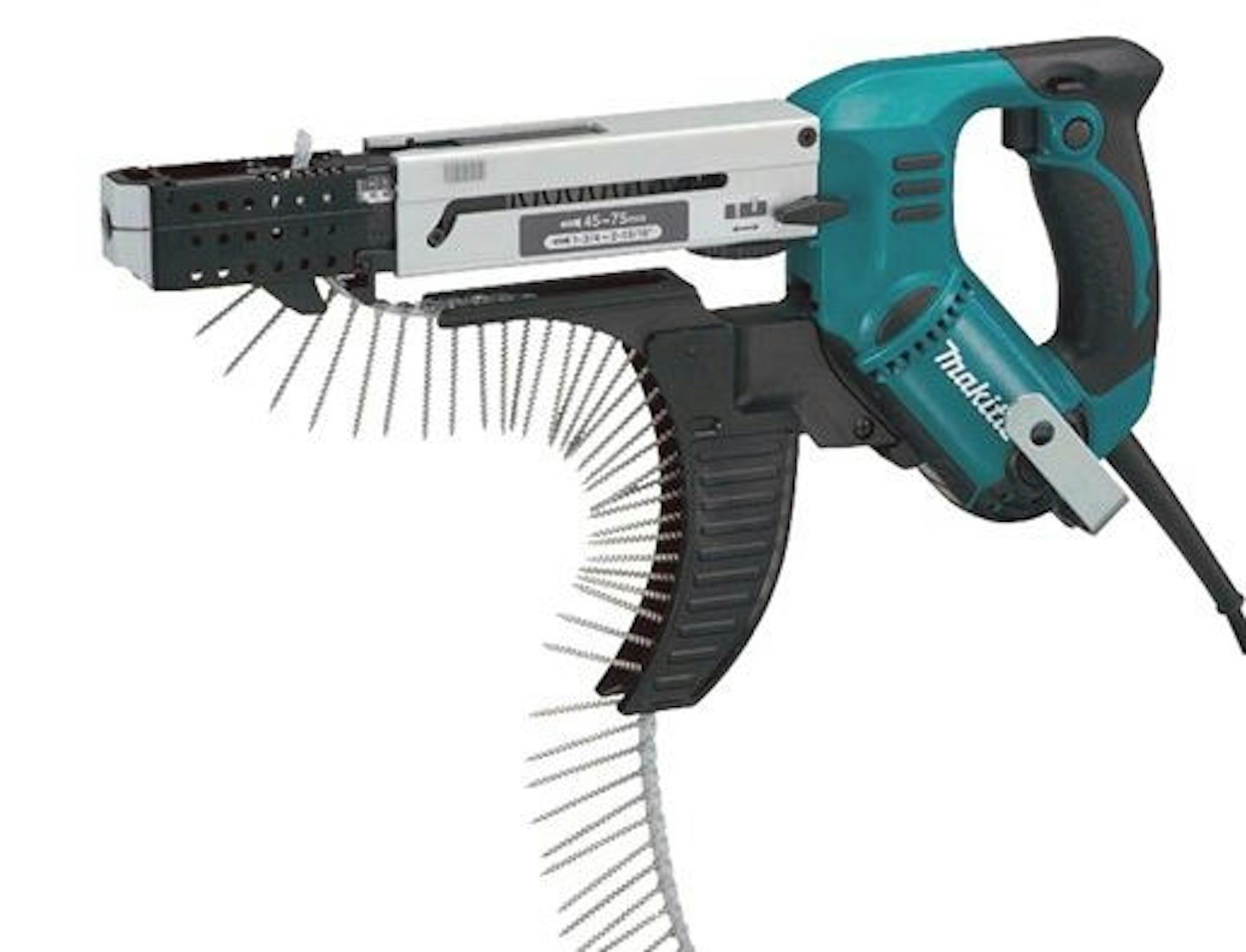
www.tooled-up.com
This is essentially the corded version of the Makita unit above. Not requiring batteries, it is a bit lighter.
About autofeed screwdrivers and how to use
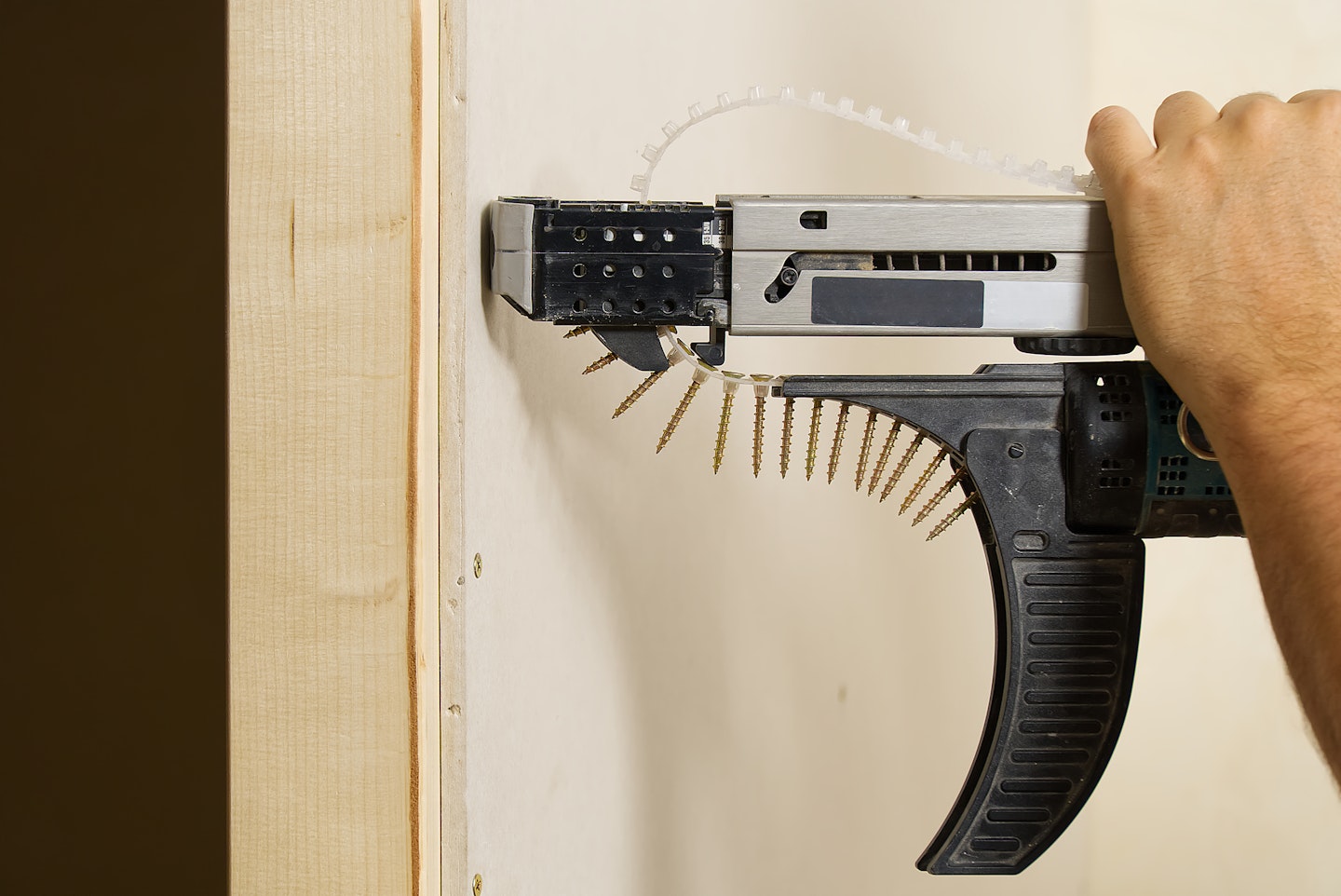
They look a little complicated but are in fact very easy to use. First, you set the screwdriver to the desired screw length. You do this by pressing the lever on top of the stopper base while pulling out the stopper base itself until you are at the desired screw length as indicated on the scale next to the stopper. To adjust the driving depth, you pull back the stopper base and use the adjusting knob near the motor. To insert the collated screws, simply feed the strip up through the screw guide and into the feeder box. The tools have clear and illustrated instructions about this too.
Related: The best socket sets
The best drywall screwdrivers
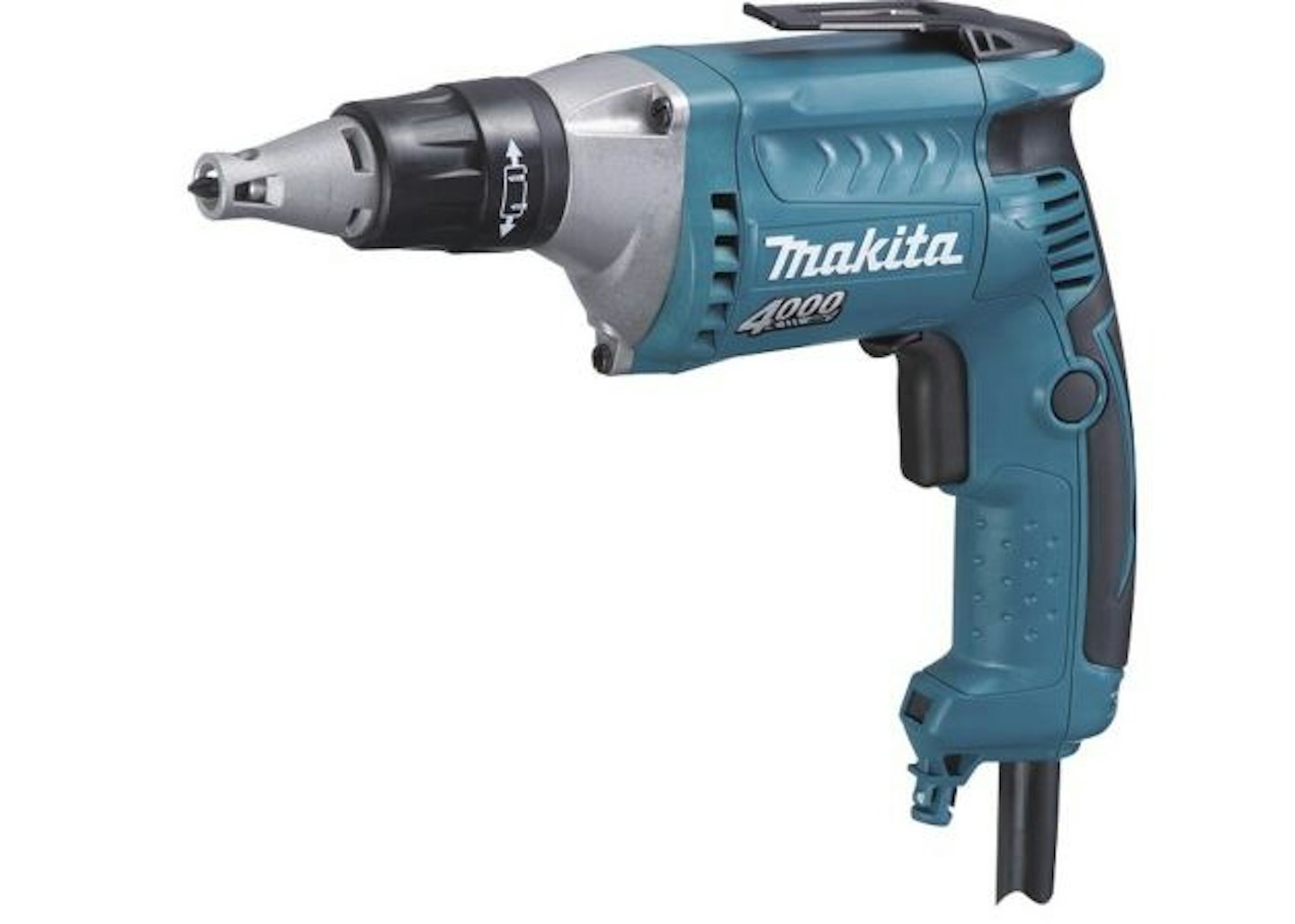
www.ffx.co.uk
Perfect for DIY and trade use alike, everyone will find use in Makitau2019s lightweight drywall screwdriver. It has a u00bc-inch hex chuck and also has a depth stop feature which lets you set exactly how deep you want the screws to be driven, meaning you donu2019t have to use your judgement each time. Perfect for renovations. It can also be fitted with an autofeed attachment for faster working.
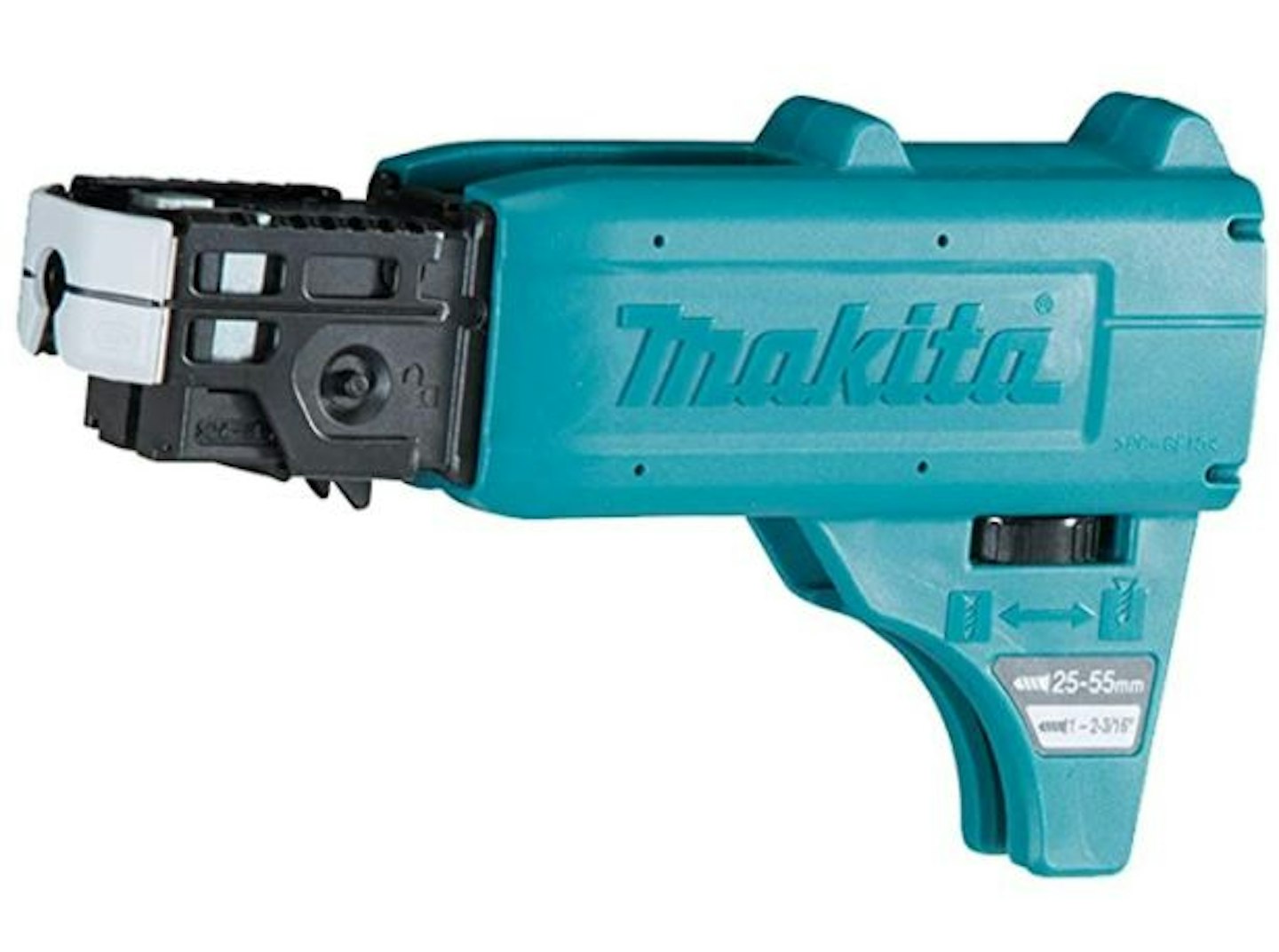
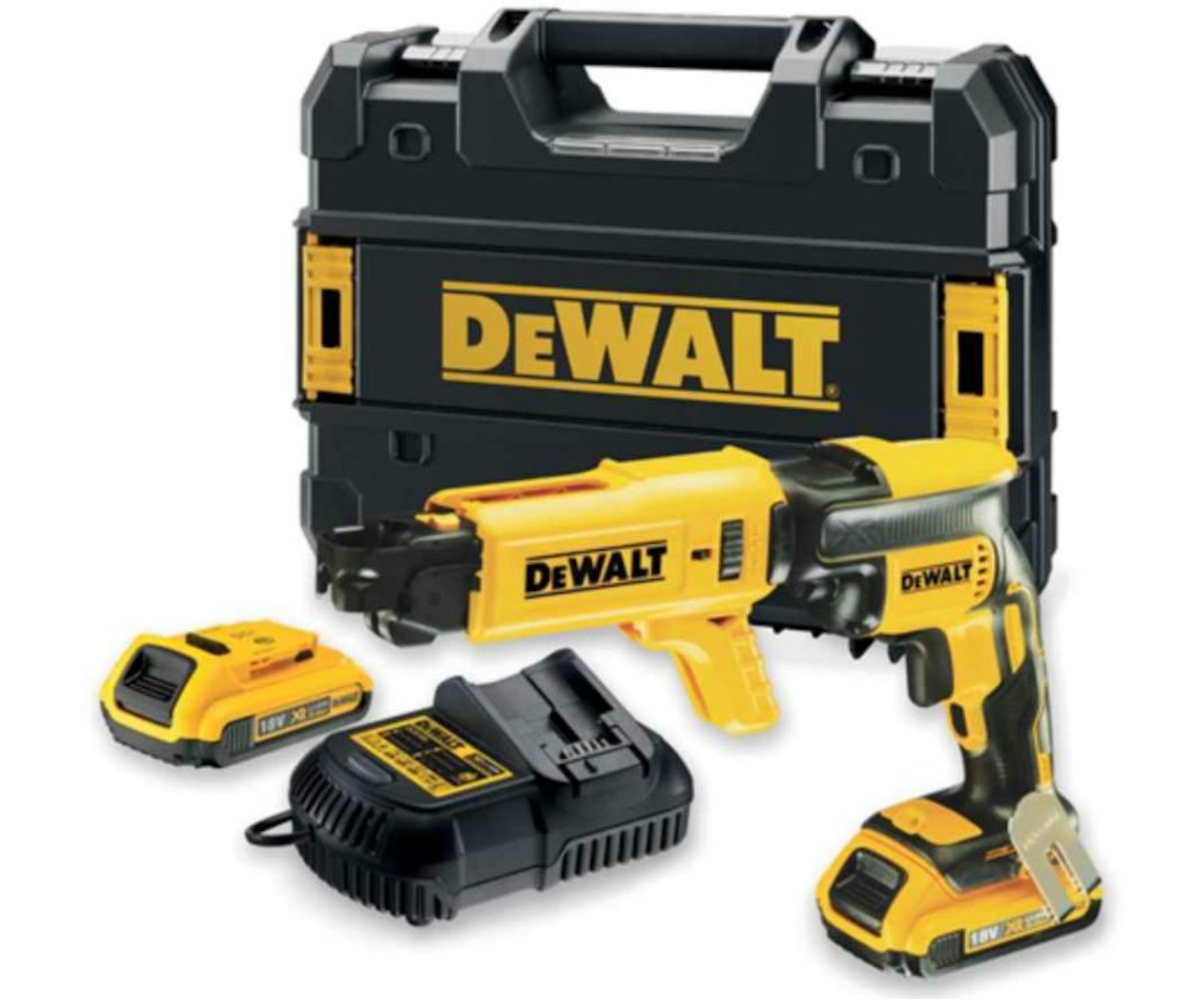
www.ffx.co.uk
A full kit that includes everything you need. The screwdriver has a brushless motor which makes it very reliable and efficient; you can insert over 2000 screws on a charge and itu2019s one of the most compact tools of its kind. You get two 2.0Ah Li-ion batteries, a charger, and an autofeed attachment for using collated screws.
About drywall screwdrivers and how to use
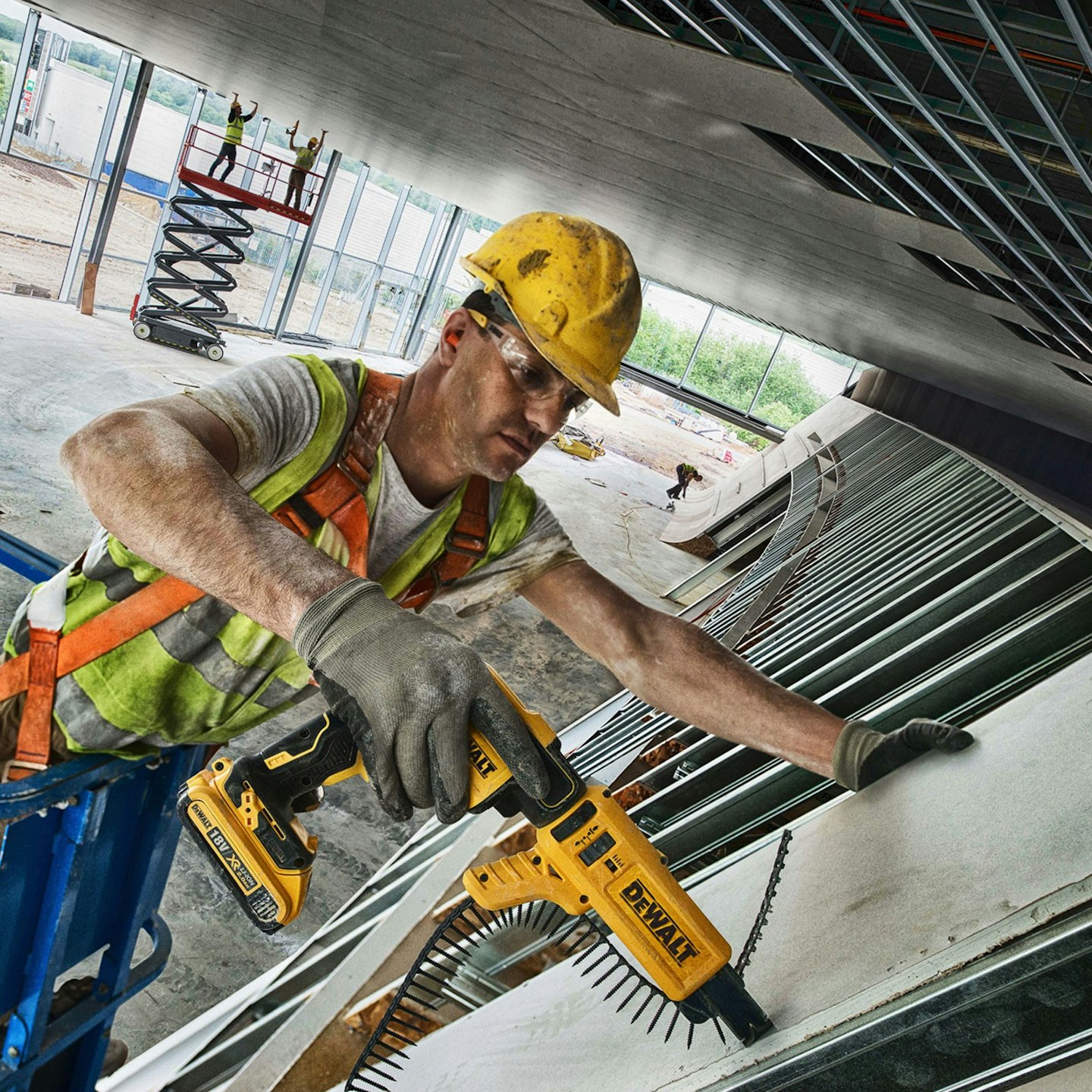
With the autofeed attachment, drywall screwdrivers work in the same way as the autofeed tools. But because they come as standard with a nose cone for single shots, they are more versatile. You can set the drive depth for faster working, and magnetic bits make big screwdriving jobs even easier. They are the ideal addition to a cordless drill for the serious DIYer or professional.
Related: The best ratcheting screwdrivers
General buyer’s advice
Think about the kind of jobs you will need an electric screwdriver for. Most of us will only need a little cordless one for our furniture assembly and other tasks around the house. For those of you who undertake more serious jobs, such as large renovations, building decks, or helping friends with on-site jobs, an autofeed or drywall screwdriver may be for you.
Once you decide on which is right for you, remember to always familiarise yourself with the tool, how it works, and how to take care of it by reading the instructions first. Several times if need be. Mistreatment is by far the number one cause of malfunctions.
What to read next:
These are the trendiest paint colours right now, according to Instagram
